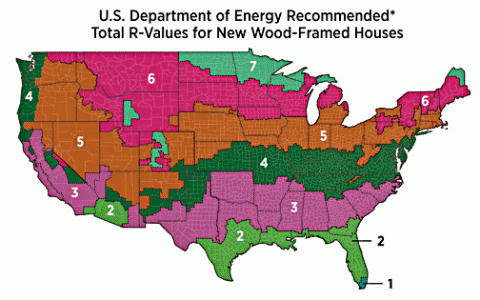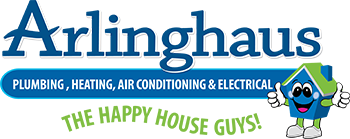Autumn is officially here; crisp mornings and fall colors are right around the corner. With the start of fall comes the dawning realization that winter is just over the horizon. You have several weeks to get your home ready for winter while the weather is still reasonable. Use this fall maintenance checklist to put your home in order and guarantee a winter full of warm comfort and increased energy efficiency.
1. Pack Up Outdoor Equipment
As the weather starts to cool here in Cincinnati, and you stop spending quite as much time outside, you can take this opportunity to get your deck or patio ready for winter. Clean and remove wood patio chairs and tables to a shed or other protected location, taking note of any signs of cracks or other damage to the wood. Spray off toys and clean sports equipment, and bring them inside to your garage or another place for storage. Use an appropriate cover for any equipment that must remain outside, to protect it from winter weather.
2. Prepare Outdoor Systems for Winter
Once you are ready to turn off your sprinkling system for the year, you should perform a few simple tasks to minimize problems for next spring:
- Drain and disconnect all hoses, wind them up and put them away.
- Winterize your pool or pond.
- Shut off your automatic sprinkling and irrigation systems or set it to “rain” mode.
- Turn off the supply valve for your outdoor watering system.
- Empty the sprinkling system of water using a manual or automatic drain valve.
As temperatures dip well below freezing in the Greater Cincinnati area during the winter, you may want to consider add self-sticking insulation to pipework that stays above the ground. To ensure that your sprinklers will not go off unexpectedly, you may also choose to turn off the circuit breaker to your control panel and disconnect the wires.
3. Protect Exterior HVAC Equipment
Fall is a time of transition between using air conditioning and relying on heat to keep warm. As you turn your air conditioning off until next spring, you should take a few steps to protect the equipment during the winter. Turn off the circuit breaker to the air conditioning condenser and clean the outside of the condenser. You may be able to clean it adequately with a stiff brush or a damp washcloth. If you have stubborn dirt, ask your HVAC specialist about using a hose to clean the unit. Once it’s clean, you may opt to cover it. If you do, you should use a cover that is designed specifically for air conditioners because they allow airflow that prevents condensation and rusting.
4. Insulate Plumbing
Cold Cincinnati winters make many people rely on hot water more often, but that is precisely when your plumbing is at its most vulnerable. Even when the average outside temperature is somewhat above freezing, you could still suffer from frozen or burst pipes. The best way to avoid this problem is to insulate any exposed plumbing and to promptly address any clogs in the system. Extend this inspection to your hot water heater, as well. If the appliance is more than five years old, you may benefit from adding a hot water heater blanket. This layer of insulation prevents heat loss, which saves you money and improves your energy efficiency.
5. Inspect Home Insulation
In order for you to stay warm this winter, you need your home to keep the heated air inside as long as possible. The movement of warm air out of your home, called heat transfer, is minimized by insulation. However, if your insulation is inadequate, your furnace or heat pump will have to work harder to keep your home at a set temperature. The U.S. Department of Energy designates zones to help homeowners determine the minimum levels of insulation recommended for new homes. We’re in Zone 4 here in the Tri-State area, which calls for insulation at a value of R38-R60 for attic and R25-R30 for the floor. Adding insulation is often a fairly inexpensive way to significantly increase energy efficiency and overall home comfort.

6. Clean and Repair Your Roof
The roof is a place that many homeowners tend not get a good look at until they have a problem. Since no one wants to deal with a leaky roof or frozen gutters in winter, fall is the best time for you to tick these items off your to-do list.
- Call a professional or go the DIY route and use a sturdy ladder to climb up to the roof and inspect the roofing. Loose or broken shingles may be easy to replace, and reduce the likelihood of leaking.
- Look at the flashings around the chimney and any skylights. If they look worn or broken, have them replaced.
- Dirty gutters may lead to clogs, which can cause standing water to freeze in sheets off the gutter system, so clear all gutters fully after the leaves have fallen.
- Sweep or spray debris off the roof.
7. Service Heating Systems
Whether you use a heat pump or a furnace for heating, you should hire an HVAC professional to make sure the equipment is in good condition for winter. Technicians can perform routine fall maintenance:
- replacing air filters
- inspecting the burner
- ensuring fuel supply
- clearing condensate drain line
This is a good time to ask your HVAC technician about the condition of your overall system — including appliances and ductwork. It allows you to plan ahead for expected replacements or repairs you will need to do now or sometime next year. If you use a manual thermostat, ask about installing a programmable thermostat to save energy while you maintain a comfortable home temperature.
8. Seal Air Leaks
While you probably don’t leave your door wide open in the middle of winter, you’re probably still losing warm air out your doors and windows. Small air leaks around the door and window frames can compromise your indoor air quality and make the spaces near them uncomfortably cold. Seal your doorframes and window frames with caulking and weatherstripping, which are a relatively simple and inexpensive DIY project.
9. Maintain the Chimney
Few things are cozier during the coldest winter months than a crackling wood fire, but your chimney needs a little TLC to keep the fire burning without creating unnecessary safety hazards. Chimneys should be cleaned and inspected at least once a year. Cleaning helps to prevent the buildup of creosote, a flammable byproduct of fires that can result in damaging or even deadly explosions, according to the Chimney Safety Institute of America. A professional chimney sweep can clear the creosote, inspect the condition of the chimney flashings and structural condition, and ensure adequate airflow.
10. Improve Overall Efficiency
When you want to decrease your energy consumption and save some money on your heating bills, the best improvements you can make comes from within: The decision to save energy helps you to minimize behaviors that could waste it. For example, instead of relying exclusively on your furnace or heat pump to keep you warm, you can install a ceiling fan built to circulate warm air as well as cooled air. Put on a sweater or keep a throw blanket next to your couch for family members to wrap around themselves as they watch television. Little changes can add up to bigger savings over the course of the year.
A bit of planning and work completed during the fall makes winter so much more cozy and delightful. Before the really cold weather hits, complete all the tasks on this fall maintenance checklist. You will end the year in health, in style and with some extra money in your pocket from energy savings.


